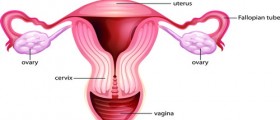
Today, tubal ligation is done in a fairly simple surgical procedure, however, it does come with some side effects and complications, which is why many women still avoid it. One of the most common side effects is post-tubal ligation syndrome.
Post-tubal ligation syndrome
Tubal ligation means that the fallopian tubes are damaged or changed in several possible ways so the egg, released from the ovary, cannot move down in the tube. This means that the sperm cannot reach the egg and there can be no fertilization.
The ligation or tying of the tubes can be done in several ways. It can be blocked, clamped, sealed or cut. Whatever the method is, the fallopian tubes suffer from damage and they are not in their normal state. Sometimes other things get damaged in the procedure too, for example the blood supply to the ovaries, or the damage to the receptor cells that carry the message about hormones and when they need to be released. In some cases, the ovaries can become isolated and atrophied. All this leaves consequences to the woman’s reproductive health.
Post-tubal ligation syndrome occurs due to these effects. In most cases, the syndrome leads to hormonal changes and imbalances, with abnormal hormonal levels.
The risk of post-tubal ligation syndrome
Not all women who have had their tubes tied have the same risk of suffering from post-tubal ligation syndrome. The risk increases in women who have underwent a more invasive or destructive method of ligation, like Pomeroy and Irving ligation to the mid-sector of the tubes or the coagulation method. Tubal ligation with clips and silicone rings is less invasive and thus involves less risk.
Another significant risk factor is the age. Women in their twenties are more at risk than those who undergo this procedure at a later age. However, the number of cases of post-tubal ligation syndrome in women in their twenties is not very high, probably because not many women of this age decide to undergo tubal ligation.
One of the solutions for post-tubal ligation syndrome is tubal reversal, which is a procedure in which the fallopian tubes are repaired and brought back to their normal state.

















Your thoughts on this
Loading...